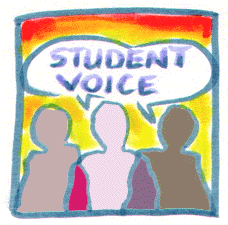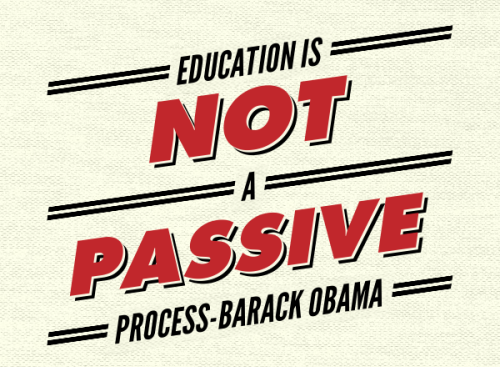Student Voice: A Response to “The Class”
The Class/Entre les murs introduces us to a year of teaching in an intercity school in Paris. With a group of unmotivated and disrespectful students, teachers are not able to take a regular approach to teaching; they must create their own style that targets the students within their classroom. Throughout the film, the audience questions the topic of “student voice” and whether or not M. Marin and the school are providing their students with enough opportunities to achieve this. Student voice involves providing students with a platform to share their input and be heard in a receptive way. While the concept seems great, just how valuable is student voice?

I often catch myself asking the question, “What is the ultimate purpose of education?” Is it simply to learn a bunch of different things that the government deems valuable? Is it to prepare students to find a job and work? Is it to teach students to be contributing members of society? What I’ve come to find is that the purpose of education is far more complex, proving to have more purposes that I could ever define. But how much more could the students gain if they were contributing to their own education?
Students learn about issues in the world (pollution, racism, etc.) and people who are remembered for something great (Laura Secord), but are students being prepared to tackle these issues and be remembered for their contributions? I believe that teaching students about being a leader and a contributing member of society isn’t enough; we must provide them with the tools and characteristics to become that leader. By allowing students to have their voice heard and to be an active contributor to their education, they will come to realize that their actions and decisions can make a difference and they can bring positive change to the world around them.
Edutopia provides us with three reasons why student voice is key:
- What students have to say matters in how learning happens.
- Students have untapped expertise and knowledge that can bring renewed relevance and authenticity to classrooms and school reform efforts.
- Students benefit from opportunities to practice the problem solving, leadership and creative thinking required to participate in a decision-making school community.
http://www.edutopia.org/blog/sammamish-2-including-student-voice-bill-palmer
As a teacher, we must learn to share the power of the classroom with our students, allowing them the opportunity to hold the reigns of their own education. Not only does this make students more engaged in their learning and learn more content because of their engagement, but it prepares them to be the best person that they can be. This is all we can really hope for as teachers.

Totally agree, Spencer! I also find myself asking the question what exactly is the purpose of education?? Student voice is of the utmost importance in allowing students to take charge of their education and keep interested in their learning, but I find myself overwhelmed in thinking of how to hear both the collective and all the individual students in a classroom of 30 give or take. How do you think, as educators, we can be sure to hear every student’s voice, equally, and not only those that often speak out and make their voice heard?
The question of the profession: How can we get to know, hear from, and positively impact each of our students?
I’m not sure if you’ve heard of it before, but there is a theory about motivating people called the “10-80-10 Theory”. This explains that the top 10% of a group are over achievers and will be able to do anything that you ask of them. This is essentially the students that regularly speak out, as you mentioned. The bottom 10% are usually the trouble makers and will refuse to do work. These students are regularly spoken to by the teacher during scoldings. The middle 80% make up the rest of the population and will remain relatively neutral and compliant to requests.
This is exactly what is happening in M. Marin’s classroom: He is focusing on the bottom 10% and forgetting about everyone else. Instead of adopting this approach, he should focus on the middle and top percentages, raising the bar and (hopefully) encouraging the bottom 10% to be like their peers. This will also refocus him, allowing him to attend to and get to know all of his students, rather than just the top and bottom 10%.
Spencer, great reflection! I definitely agree with you that simply teaching students “how” to become leaders is not enough. Students are continually observing us as leaders in the classroom and thus we must set a proper example of this role. A fellow student once pointed out that “leadership is the art of influencing human behaviour” and that teachers must distinguish this role from that of providing “management” to be able to achieve this goal.
Spencer, you’re post is so insightful! You raised many interesting points in a few paragraphs, which in a word is amazing. I agree with what you say in regards to M. Marin only paying attention to the bottom 10% and forgetting about everyone else. Finding a healthy balance can be quite challenging for teachers, but it it seems as though you have found a valuable solution.
*your